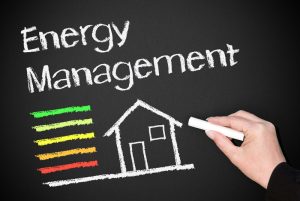The basic concept behind air conditioning and heat pumps is quite old. After all, refrigeration was invented in 1755. It was during the 1970s when central air conditioners became so popular in American homes that virtually all new construction was built with ductwork for them.
But as much as these things have been around forever, they have also been evolving.
AC and heat pump manufacturers don’t want to simply keep selling the same old systems. They want customers to be happier and more comfortable and, perhaps most importantly, to spend less money on the energy that powers these systems.
In recent years, there have been some exciting advances in AC and heat pump technology that boost the efficiency of these systems. Check it out!
A Little Background
Let’s first refresh your memory on the basics of how heat pumps and air conditioners work. There are two units, one indoors and one out. Indoors, super-cold refrigerant runs through the evaporator coils, soaking up heat from the warm indoor air. The now-cold air is pushed through ducts and vents by the blower fan, which is powered by a motor.
Outdoors, that heated refrigerant travels to the condenser coils and all the heat dissipates, so the refrigerant will be ready to go back inside and absorb more. The outdoor unit also contains the compressor. This large, costly component keeps the refrigerant at the right pressure so it will flow properly, absorbing and releasing, absorbing and releasing.
A heat pump works in exactly the same way, with one exciting feature that sets it apart: it’s reversible. In addition to carrying heat out of the home, it can carry heat into the home. A component in the outdoor unit called the reversing valve switches the direction of the refrigerant flow, making it possible for this one system to both heat and cool your home.
The Recent Changes
Our country—and the world—is working hard to find ways to consume less energy. It’s necessary for the health of the planet, and it’s hugely helpful for the economic wellbeing of the people. HVAC manufacturers have made great strides lately, making it possible for air conditioners and heat pumps to use significantly less energy.
Here’s what’s changed.
- Coil Materials: In order for the refrigerant to change temperature easily, the coil must as well. This means that materials with higher thermal conductivity will allow the refrigerant to absorb and release heat more quickly and easily, using less energy. The new energy-efficient AC and heat pump coils are made of materials that work much better for this purpose than ever before.
- Fan Motors: When a motor can only be on or off, that means that every time it’s needed, however slightly, it will draw full power. That’s how AC blower fan motors used to work. Today, variable-speed motors only use full power when necessary. Otherwise, they’re able to automatically cycle to power-saving modes.
- Compressors: This is the component which draws the most power. Any changes here have a huge impact. And just like the blower fan motors, today’s compressors can run most of the time at a lower level. You’ll stay just as comfortable, though, because if high power is actually needed, it will come on automatically.
Whatever your HVAC needs, from installation to AC maintenance to heat pump repair in Chicago, IL, we’re happy to help.
Contact ServiceMax with any questions about HVAC efficiency.
